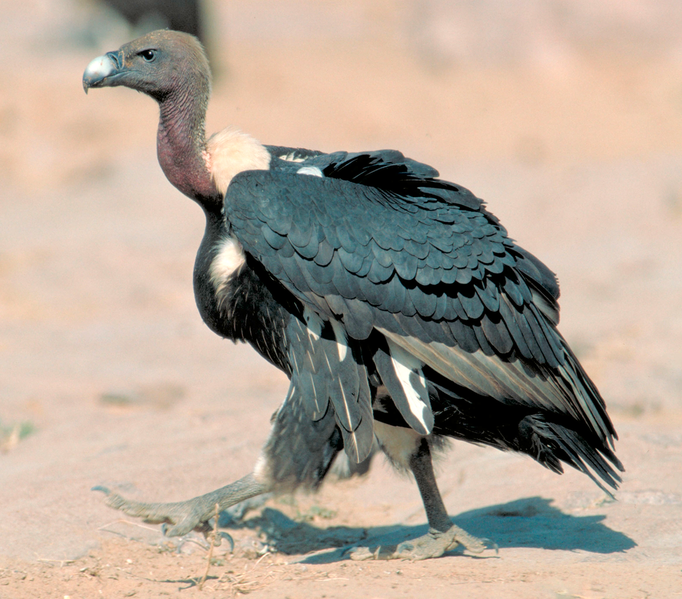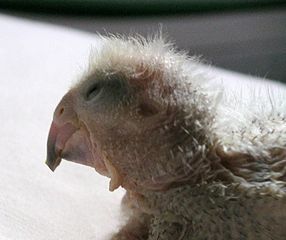 Vulture welfare tends not to arouse much concern, even from bird enthusiasts. However, several species are now at the center of a growing extinction crisis in south Asia. The story illustrates just how complicated things can become when the needs of livestock, people and wildlife collide, and why we must look below the surface when we consider the conservation of any bird or other animal.
Vulture welfare tends not to arouse much concern, even from bird enthusiasts. However, several species are now at the center of a growing extinction crisis in south Asia. The story illustrates just how complicated things can become when the needs of livestock, people and wildlife collide, and why we must look below the surface when we consider the conservation of any bird or other animal.
A Double-Edged Sword
Diclofenac, a drug used to treat both people and livestock, is at the heart of the troubles afflicting India’s vultures. Dead cattle and water buffalos, many of which have been medicated with Diclofenac, are a major source of food for at least 3 species of Indian vultures.
Diclofenac is fatal to vultures when consumed, and has been identified as the major reason behind the steep decline in their numbers in India. In the 1980’s, the White Rumped Vulture was considered to be the world’s most abundant large bird of prey. It has now declined by a staggering 99.9%! Populations of Indian and Slender-Billed Vultures are now at 3% of their 1990 levels.
Pharmacies Flout the Law
In 2006, India banned the use of Diclofenac as a livestock medication; it remains legal to prescribe to people (it is also regulated in Pakistan and Nepal). Farmers and ranchers are encouraged to rely upon Meloxican, which is harmless to vultures.
However, a recent survey of 250 pharmacies in 11 Indian states revealed that over 1/3 were still dispensing Diclofenac to cattle ranchers. In many cases, the drug was labeled as a human medicine, but the quantities dispensed, and their destination, left no doubt as to its intended use. Ketoprofen, also deadly to vultures, may still be legally purchased as a livestock medication. Several other products that are believed to cause vulture fatalities have not been fully investigated and remain on the market.
Vultures Also Benefit Human Health
 Human health considerations complicate vulture conservation in India. Obviously, an outright ban on suspect medications would not be reasonable if alternatives did not exist, or if people could not afford the replacements. On the other hand, in many Indian cities and rural areas, vultures directly assist human health by consuming carcasses and other refuse.
Human health considerations complicate vulture conservation in India. Obviously, an outright ban on suspect medications would not be reasonable if alternatives did not exist, or if people could not afford the replacements. On the other hand, in many Indian cities and rural areas, vultures directly assist human health by consuming carcasses and other refuse.
The importance of scavengers (and decomposers) cannot be over-estimated. While their role is more noticeable in rural and ranching areas, they are at work everywhere. Consider how many birds, mice, insects and other creatures die each day in your own city or town…how many do you see? I’ve observed vultures at work on cattle ranches in South America, and have looked into what happens to the millions of house mice that die each month at the Bronx Zoo, and can assure you that the world would be a very different – and unhealthier – place without our scavenging allies.
Captive Breeding Efforts
On a brighter note, 3 vulture breeding centers in India have had a banner chick production year. Managed by Birdlife International, the Bombay Natural History Society and other groups, the “Save Asia’s Vultures from Extinction Initiative” also operates facilities in Nepal and Pakistan, and hopes to reintroduce birds back to the wild when the threats posed by livestock drugs have been resolved.
Further Reading
Cambodia’s Vulture Restaurants
The California Condor is not Fully Protected!
Whitebacked vulture image referenced from wikipedia and originally posted by PLoS
Indian vulture image referenced from wikipedia and originally posted by Nidhin Poothully
 That Bird Blog – Bird Care and History for Pet Birds
That Bird Blog – Bird Care and History for Pet Birds



